Tick Control

Ticks are tiny arachnids that feed on blood. They have eight legs and use a process called “questing” to find their next food source. Ticks hide out in tall grasses, bushes, and trees with their front legs extended until a warm-blooded host walks by, even if this takes months. It can take several hours for a tick to attach fully to its host, and it feeds for up to two weeks before becoming engorged with blood and falling off.
What Are Ticks?
Get a Free Pest Control Quote
How to Identify Ticks
Ticks are common everywhere, from forests to gardens, and even lawns, parks, landscaping, brush, and weedy patches in urban areas.
Tick Species Found in the Carolinas
Several species of ticks can be found in North and South Carolina. The most common are:
Black-Legged Ticks, or deer ticks, are reddish-brown with a black shield below the head and have small, flat, oval-shaped bodies.
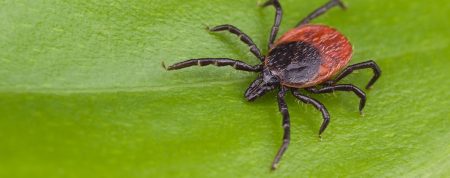
American Dog Ticks have an oval body shape and are a reddish-brown color with gray or white markings.
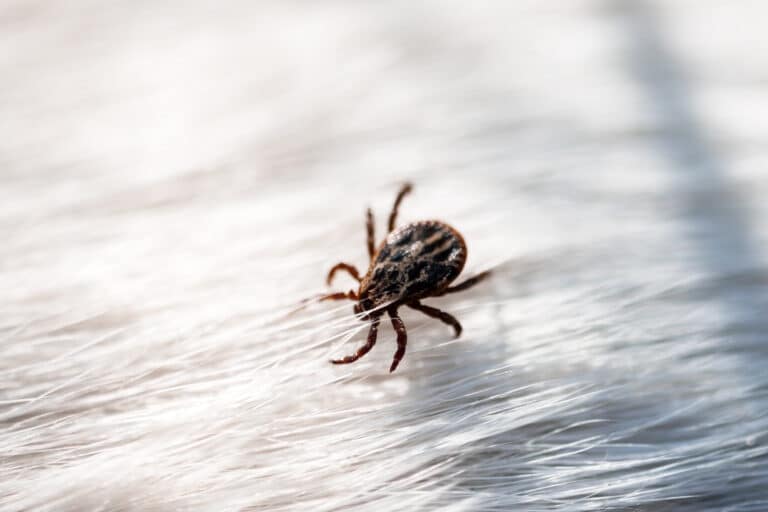
Brown Dog Ticks are also reddish-brown but don’t have any markings. They can be either oval or teardrop-shaped.

Lone Star Ticks are another reddish-brown tick. Females have a white spot on their back, and males have white streaks or spots along the edges.
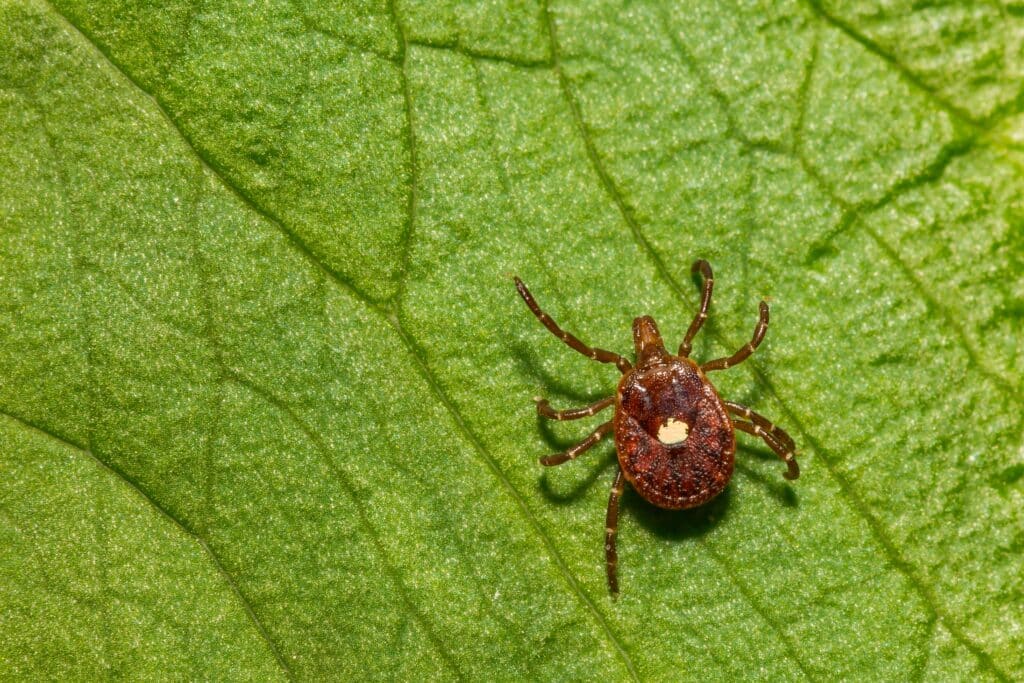
Changing climate patterns have sparked an increase in the tick population across the Carolinas and around the United States. Ticks are typically most active during the spring through fall but can be found all year round if temperatures remain above freezing.
Why Are Ticks Dangerous?
Ticks can carry disease, and instances of tick-borne illnesses are increasing, with more cases of Lyme disease, Rocky Mountain Spotted Fever, Anaplasmosis, Southern Tick Associated Rash Illness, and Ehrlichiosis. These diseases cause anything from mild symptoms, a flu-like illness, or even severe adverse health effects and chronic symptoms. The longer the illness goes undiagnosed and untreated, the greater the potential for complications. However, some tick bites are harmless.
A common sign of a tick bite is a rash, especially the bulls-eye rash associated with Lyme disease. However, not all tick bites or tick-borne illnesses show symptoms. Always seek medical treatment if you have or suspect a tick bite or tick-transmitted disease, but remember to remain vigilant in preventing bites to lower your risk of experiencing complications from hidden infections. Tick-borne illnesses are usually treatable when diagnosed early.
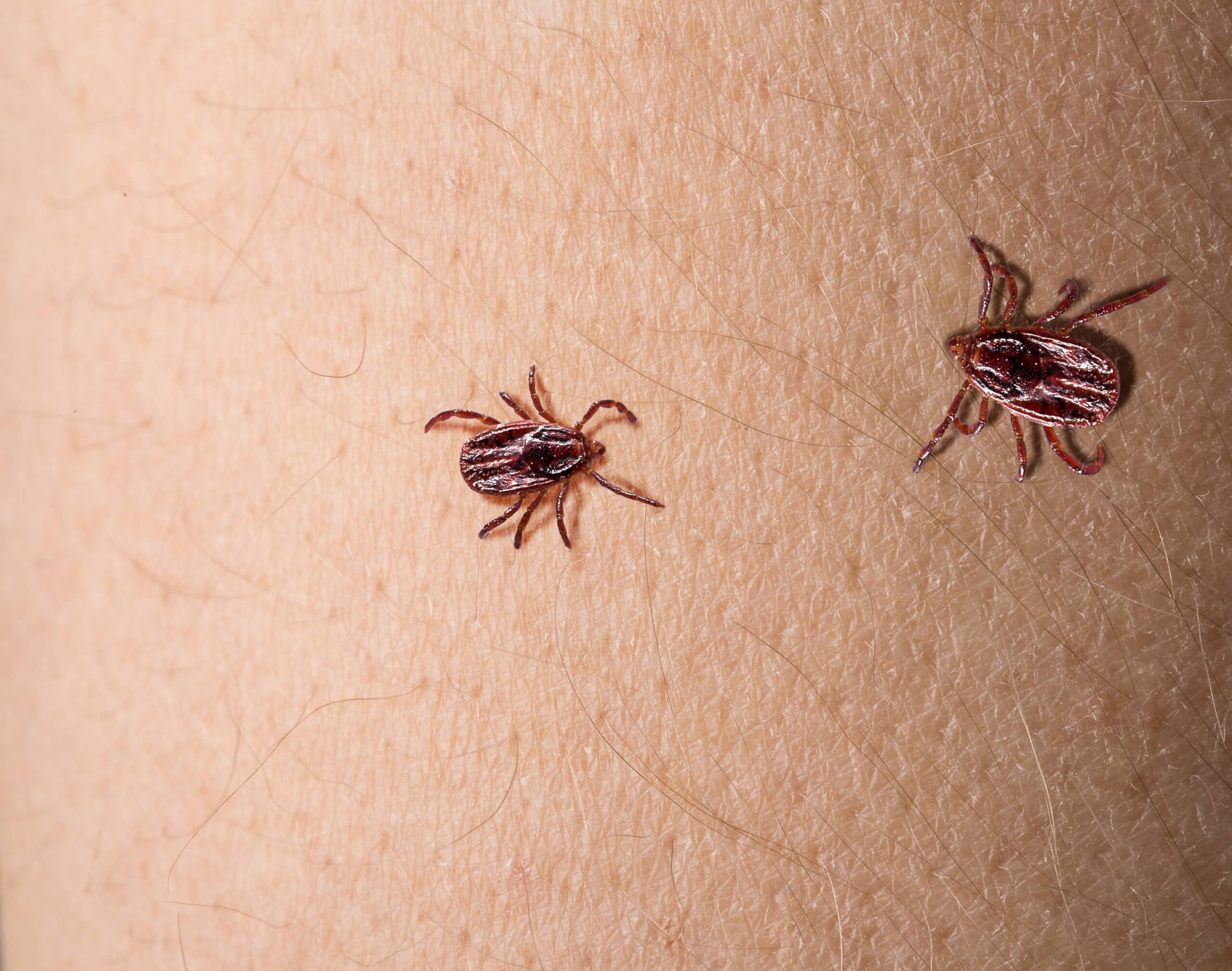
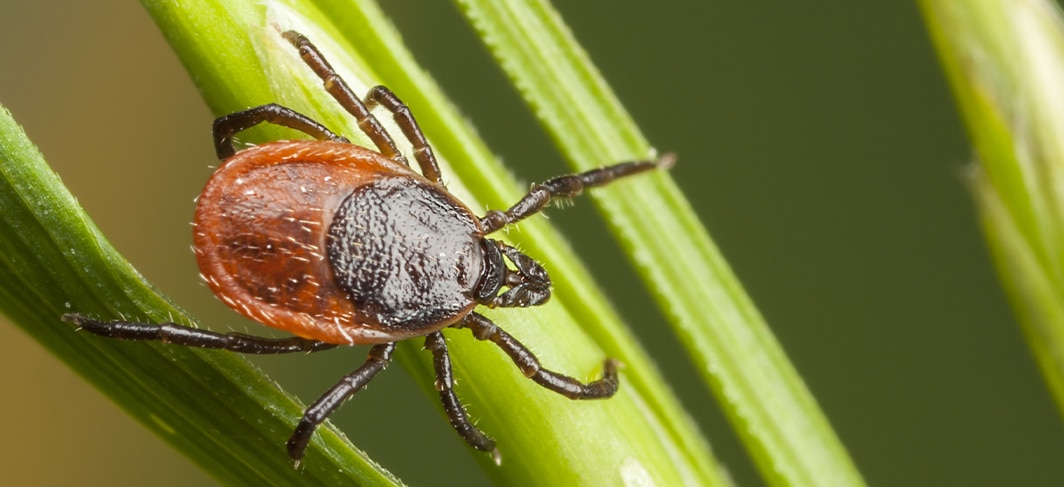
How To Remove a Tick
Never squeeze a tick! Crushing or squishing a tick may cause it to inject bacteria into your body.
- Brush hair or fur away from the area to get a clear view of the tick.
- Use tweezers to grasp the tick’s head right at the skin and pull it out in an upward, steady motion without twisting. Try to only touch the head, not the body, and avoid squeezing.
- Dispose of the tick safely by placing it in alcohol, in a sealed container, or by flushing it down the toilet.
- Clean the bite area with rubbing alcohol or soap and water. Wash your hands thoroughly.
- Observe the person or pet closely for any signs of infection. These usually present within four weeks.
Following these tick removal guidelines can help reduce the risk of contracting an illness from a disease-carrying tick.
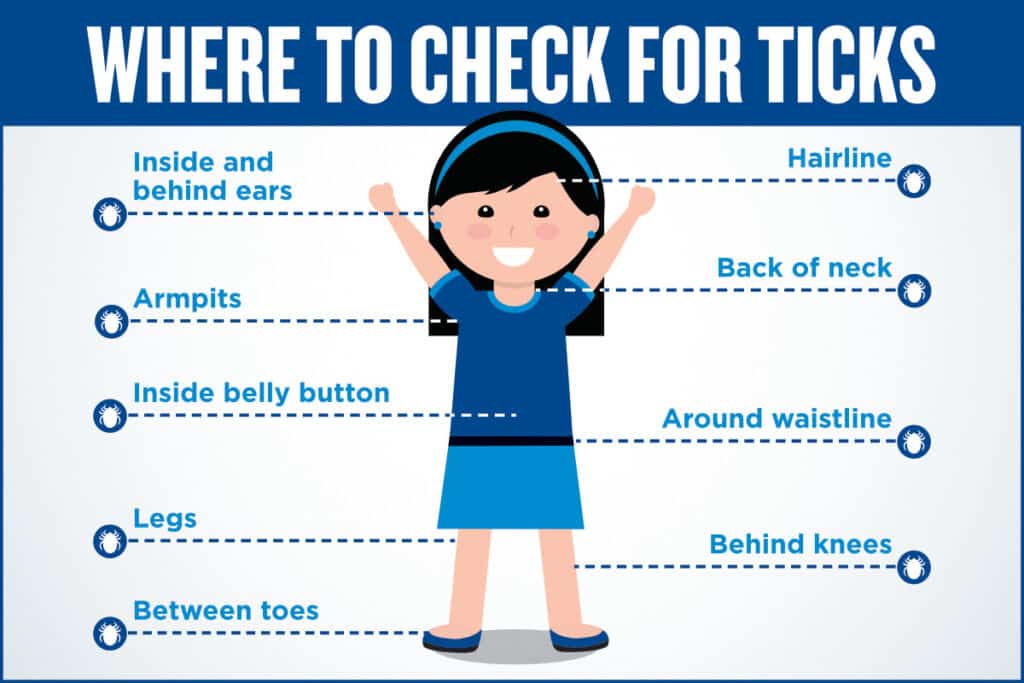
How Can I Prevent Ticks?
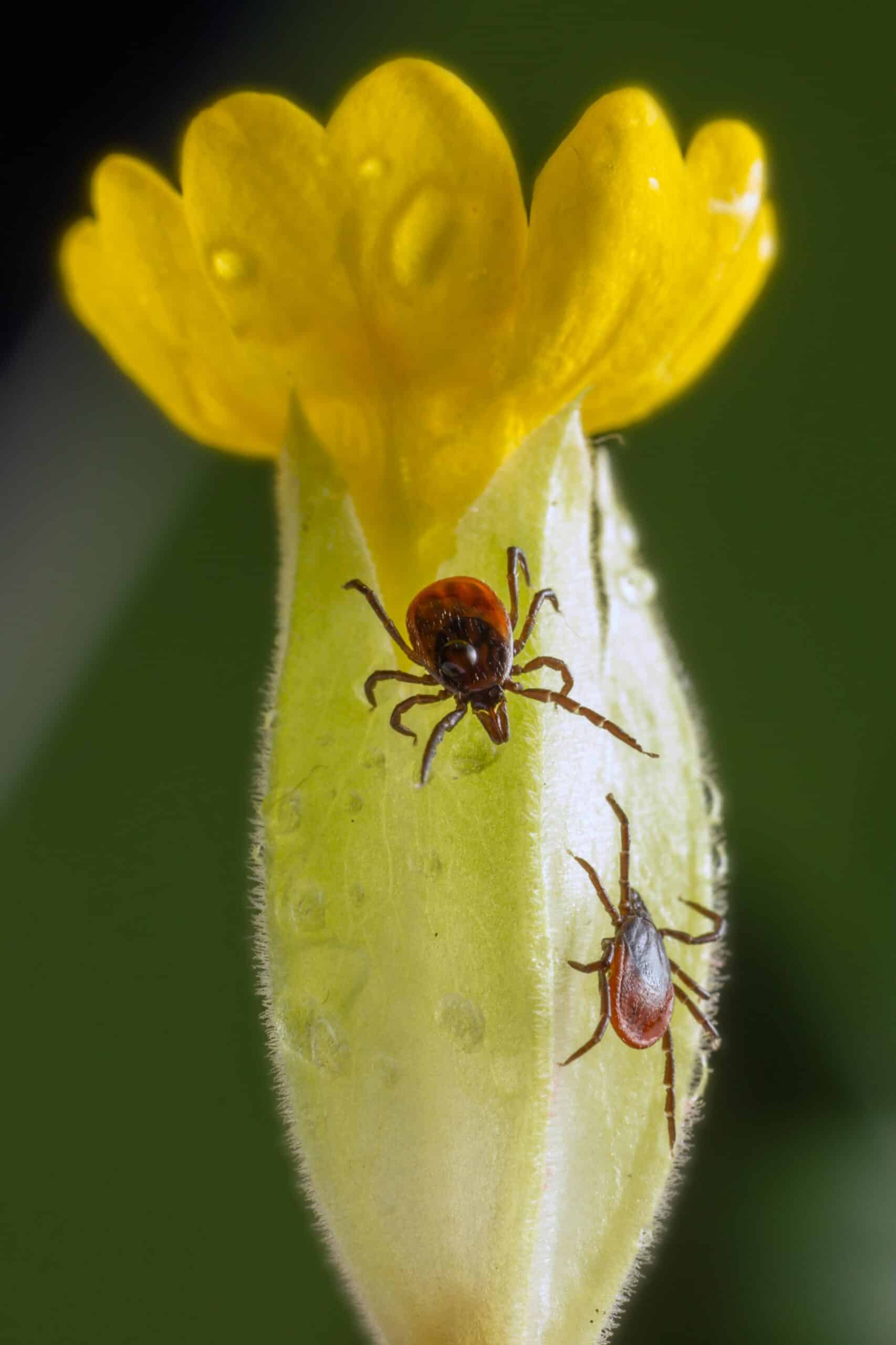
Simple preventative actions can reduce the risk of tick bites.
On Your Property
Ticks love warm and humid environments and shady areas in overgrown vegetation. They can’t jump, so they rely on climbing to quest for hosts. Some high-risk areas ticks like to hang out include plant overgrowth like grasses, bushes, and in leaf litter. Keeping your lawn mowed, shrubs trimmed, and debris cleared away can remove tempting hiding spots for ticks.
Since ticks often hitchhike onto your property on small animals, other areas that require attention are fences where animals may linger when blocked from further entrance, garbage receptacles, and firewood piles. Ticks generally steer clear of artificial surfaces, so using gravel and wood chips as barriers can help keep them away.
On Yourself and Kids
When you go outside in forested areas, parks, or other areas known for ticks, cover your skin with long sleeves, long pants, socks, and closed-toe shoes to minimize your risk of getting a tick bite. Perform a tick check afterward by examining your clothing and skin. Run your fingers over your scalp to check for small bumps that may indicate a tick.
Use tick-specific insect repellants on your clothing and exposed skin. DEET and picardin are effective at repelling ticks. Oils such as lemon and eucalyptus can also help deter ticks.
On Your Pets
Pets often get ticks from playing outside and can bring them indoors on their fur. Ask your vet about appropriate tick control for your pet. Oral medications, topical applications, and tick collars can help but can’t stop ticks entirely. Conduct a tick check on your pet to keep them healthy and avoid unwanted hitchhikers.
Tick Prevention Tips for Your Property*

1. Overgrown Vegetation
Plant overgrowth at the edge of your property can make convenient entry points to your yard. Make sure to keep your edge growth trimmed.
2. Leaf-Litter
Ticks are tiny pests and are often difficult to see, which is why you should eliminate leaf piles as they make for a convenient hiding place.
3. Fencing
While ticks are small with tiny legs, wild animals like raccoons or deer allow them to travel much farther. Fences prevent animal incursions.
4. Prevent Littering
Keeping your garbage in a sealed garbage can with a lid is essential to prevent tick-carrying animals from coming to your yard.
5. Grass
Ticks like to hunt by hiding on long blades of grass. Keeping your yard well-trimmed will make it much harder for them to find their prey.
6. Wood Storage
Tiny pests like rodents can hide in firewood piles. Keep your firewood on an elevated surface to prevent nesting by tick-carrying pests.
7. Wood Storage
Ticks prefer to travel on the grass and dislike artificial surfaces. Gravel and wood chips make excellent artificial barriers to your yard and greenery.
*Based on a publication by National Pest Management Association
Frequently Asked Questions
Can ticks survive indoors?
Ticks don’t live long indoors. They typically die of dehydration from the lack of humidity. Brown Dog Ticks can survive inside the longest and can even breed indoors.
How long can ticks live without a host?
It depends on the species, but most live less than a year without a host. The American dog tick can survive for two years.
Are all tick bites dangerous?
No, most tick bites aren’t dangerous. However, many ticks do spread harmful diseases and can cause other unwanted side effects. It’s important to take tick bites seriously.
Where do ticks live?
Ticks prefer moist, warm, and shady areas close to the ground, like grass, leaf piles, and brush. They also crawl to the ends of tall grasses and other vegetation when questing for a host.
How can I avoid a tick bite?
Cover your skin with protective clothing, stay on cleared paths when outdoors, use tick repellents, and perform tick checks.
